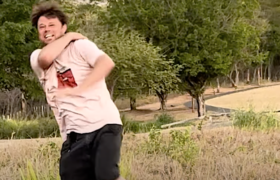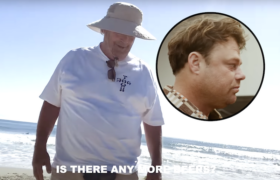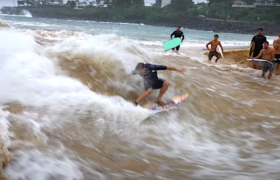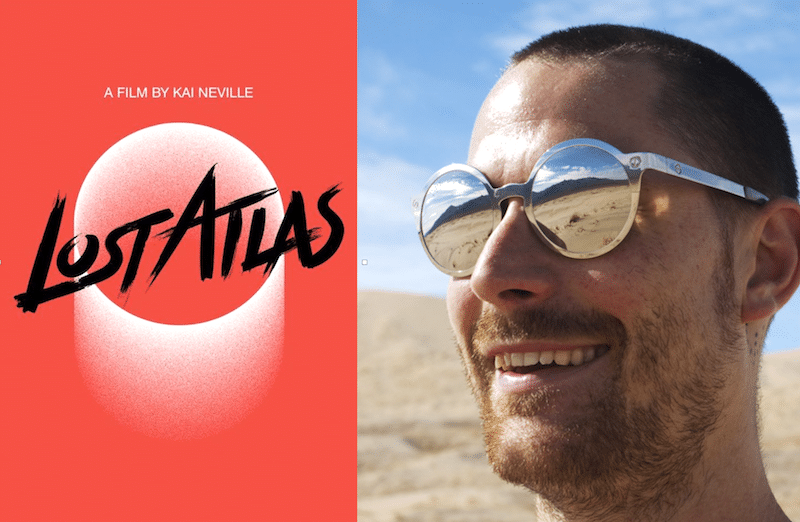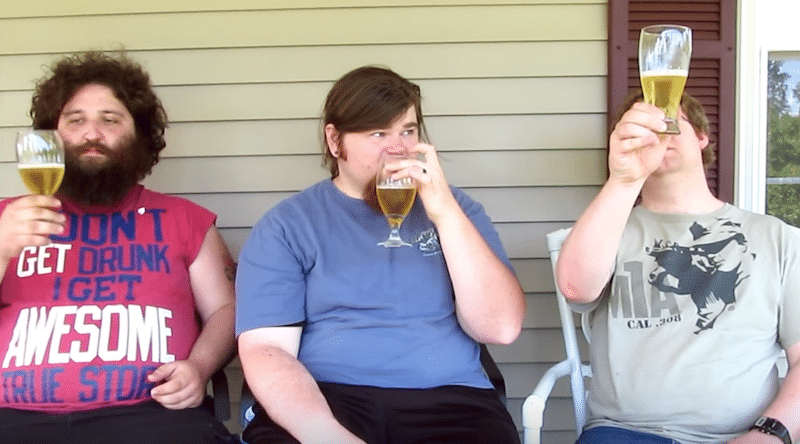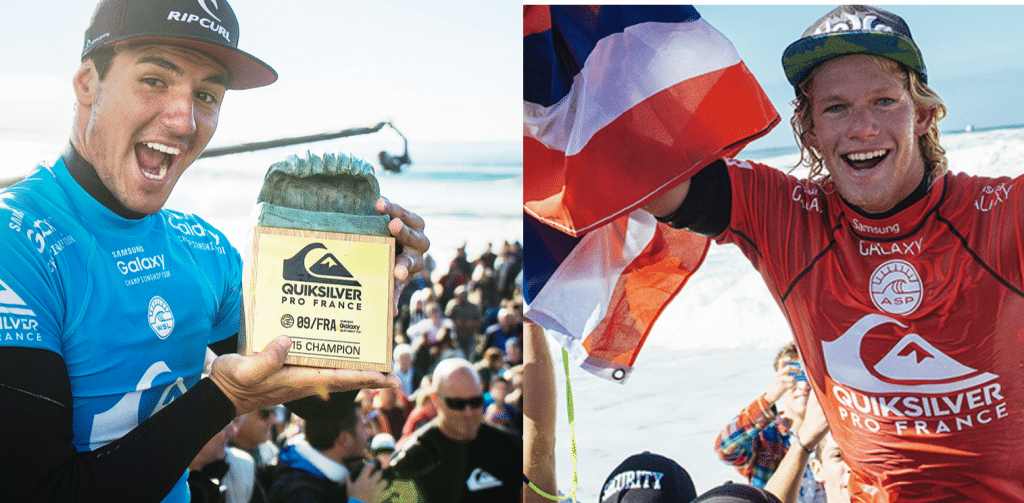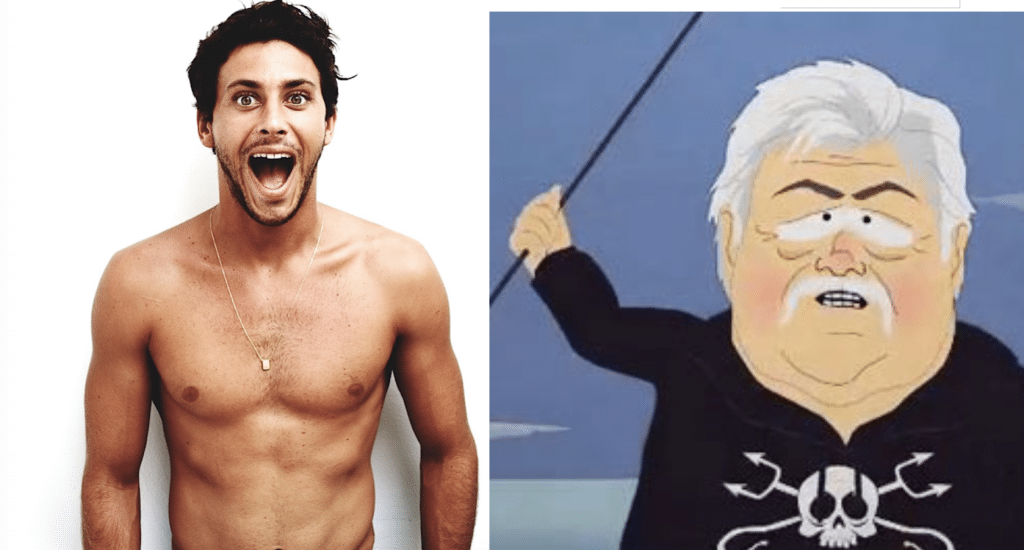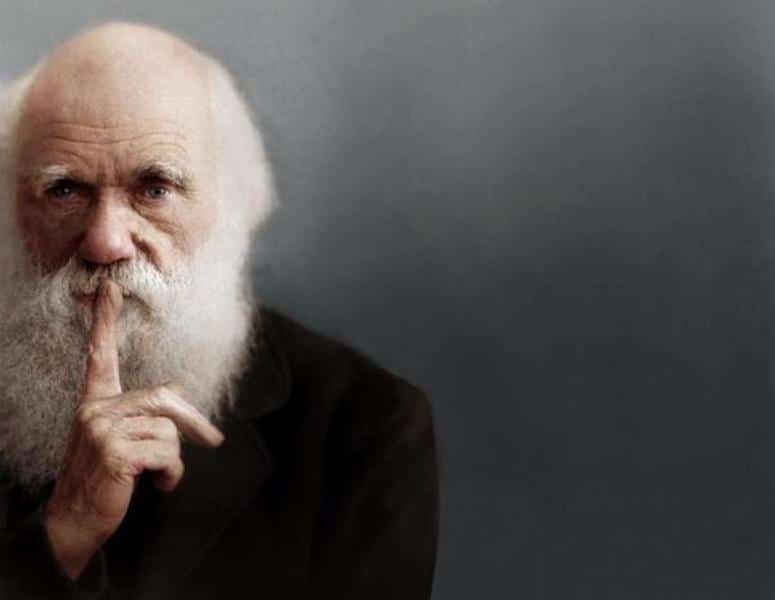Jonathan Zawada's grahic design changed surf forever…
In the summer of 2003, I launched a surfing magazine with a friend. Beyond a desire to swim in the rivers of advertising revenue that flowed at the time, we had little idea of how the magazine should present.
Would it be the Vanity Fair of surf? Would it seek the tone of National Enquirer (actually, that’d come a dozen years later with BeachGrit)?
Our direction, ultimately, was decided not by focus group or editor, but by our choice of art director, a twenty-two-year-artist called Jon Zawada. Riding on his fantastic distortionist design, the magazine became the darling of the burgeoning hipster movement and advertising meetings were generally concluded with the line, “We’re moving all our ad-spend to you and Monster Children.”
Glory days, as they say.
Jon, meanwhile, became an in-demand artist with worldwide reach, commercially and exhibiting. German motor cars (BMW), high-end fashion labels (Bassike), surf filmmakers (Kai Neville’s Lost Atlas) and music labels (Modular) all begged for his touch.

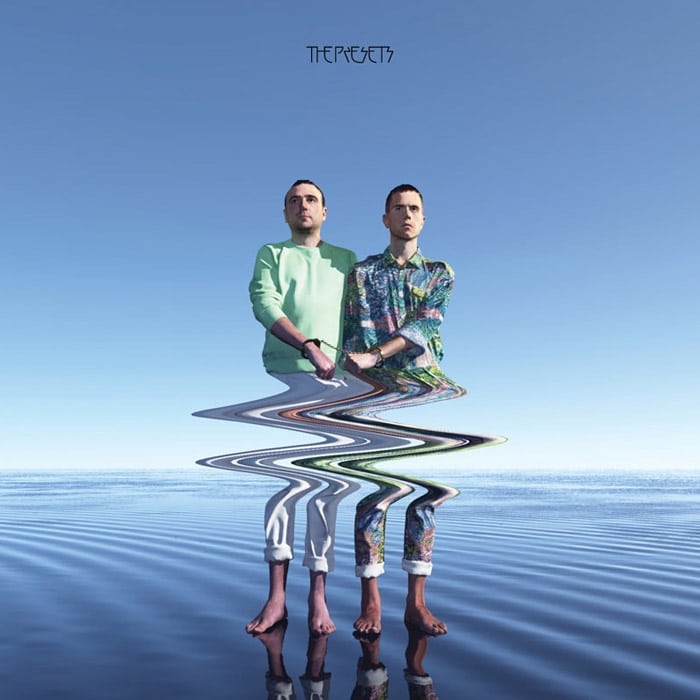
Note: Inspect Jon’s hat for New Era. Free Dumb. Perhaps Jon should’ve repurposed for the Trump campaign?
Four years go, the Los Angeles art gallery Prism sponsored Jon, who is thirty-five years old, and his wife Annie, the sister of Ozzie Wright, to live and create in LA. One of Jon’s first assignments was to visit a Malibu billionaire to discuss, and then design, a tattoo.”Once I have this on my skin you and I will be linked forever,” the billionaire told Jon.
Recently, Jon, and his wife Annie, released a furniture collection. “I’ve made a lot of furniture for giant mansions in the hills,” he says. Side tables cost three-thousand dollars, coffee tables, nine-thousand dollars and rugs six thousand dollars. (Available at Just One Eye, a “luxury boutique” on Romaine St, Los Angeles.)
“A lot of money for us, but not a lot of money for them. Everybody’s happy,” says Jon.
Why you should you care about Jon’s art?
Because his work immerses us in substance, originality and is dazzlingly charismatic. Like the artist himself.
BeachGrit: First, let’s play on a little of your surf experience. One of your first jobs was building websites.
Jon: I actually went to Tavarua to set up one of the early live streams for the Quiksilver Pro. I had to try and get satellite video streaming from the little tower out on a reef. At times it was harrowing. I went for swim off the back of the boat at Cloudbreak, got swept in the lineup and was repeatedly annihilated. I was completely out of my depth. Totally fine for doing the task but not for being on an island with a bunch of surfers.
How would you describe that year of designing Stab? It propelled us, straight away, into a realm of hipness that, perhaps, we didn’t deserve.
Jon: What I liked the most, and it’s what attracted me to music jobs even though I can’t play an instrument, and I can’t surf, is I find everything inherently interesting. The mystery about it all meant I could be a little more objective and have a different view on it. I didn’t carry any baggage on the way things should be over the way things should look. My magazine context was imported fashion magazine and I bounced that out into Stab. If I was a surfer, and had been reading surf mags since I was a kid, I’d be in that little funnel.
And, oh, how you smashed the rules of readability, sensible use of typography etc.
Jon: Yes! I tried! I tried to! Obviously there were times when I had so much to learn, you guys telling me what the interesting part of a photo was. I have no idea looking a wave what you think is interesting. I can tell what I think compositional, although actually cropping out the most important part of the photo to the surfer. What I found challenging was, how do I get something that I find rewarding too?
How does being an artist in LA differ to Sydney?
Jon: Everybody is really excited to do things here. There’s not that competitive nature that there is in Australia where people are wary of working with everybody else. Because there are so few opportunities in Australia you have to hold it with two hands and not share it. Here, everybody’s doing something, everybody wants to work with you and work together on stuff. It’s that awesome American optimism. It’s a good offset to my innate extreme pessimism. It takes me to a nice happy point. What also helps is we haven’t slid into the cultural echo chamber that we were probably in in Sydney. Our friends are more varied and what they do is widespread.
From what well does your inspiration spring from?
Jon: Looking back, the natural aspects of mathematics and science and physics, the things that I gravitate towards. If I’ve got any downtime or if I’m reading, that’s what I focus on and absorb. It’s a constant push-and-pull, the maths, and being pulled towards stuff that’s a natural beauty, finding what’s amazing in stones and plants and water and landscapes. Stuff that’s very outside me. Two extremes, one super internal, maths, the other super external, the natural world.
Album covers were your thing years back, but you stepped away from music until recently. Why?
Jon: I didn’t really like the whole system, the way it operated ethically. I liked talking to musicians and bouncing ideas back and forth with interesting and nice people. The stuff I didn’t like were musicians being signed really young, having their egos blown up and if the album didn’t do so good, or the second album, all the people that hd been around them and inflated them and changed the way they viewed the world… drastically… well, they suddenly disappeared. Kids came out of school, got a record deal, didn’t learn how to operate in the world or how to make compromises, were told everything they did was brilliant and as soon as something didn’t work out for the record label, everybody would turn their backs. If they had personal problems or trouble that couldn’t be solved by placating their egos, nobody was there to help them. Even though that same group of people pulled them away from their friends and family when they blew up.
And, now, in the interim, the music industry has collapsed. A lot of the bad stuff has gone, musicians have to do a lot more for themselves and it facilitates a nicer, more interesting work arrangement.
Do you examine what is called surf art?
Jon: Not heaps, but there is one guy I follow. Thomas Lynch III does amazing airbrushed psychedelic space waves and sunsets with multiple plants over a perfect tube. I love that stuff, outside of that, I don’t seek much of it out. Annie’s brother, being a professional surfer, whenever we introduce ourselves and they say, I’m a surfer, we mention Annie’s brother and they all know who he is. It’s always a good ice breaker.
And you branded the Kai Neville film Lost Atlas, a collaboration I believe that caught Mr Neville at the apex of his game.
Jon: For Lost Atlas, I was completely unaware of who any of the people were in it and was able to treat it with a level of distance which, for me, was super beneficial. If I’m too close to something, or I know too much, I can get quite nervous about taking chances or not trying to dig into some aspect that I think is interesting. I was keen on a bunch of other stuff at the time, graphic poster stuff. As a result, when I did all the art work I did what I wanted to do. It was the same with Stab. In retrospect, and deep, deep down, at the time I wished I was doing some art-film poster in the seventies instead of DVD package for surf film in the two-thousands. It all becomes more interesting as a result. Digging for how I can get what I want out of it and ending up in a unique space.
(Note: this story appeared in an issue of The Surfer’s Journal.)
